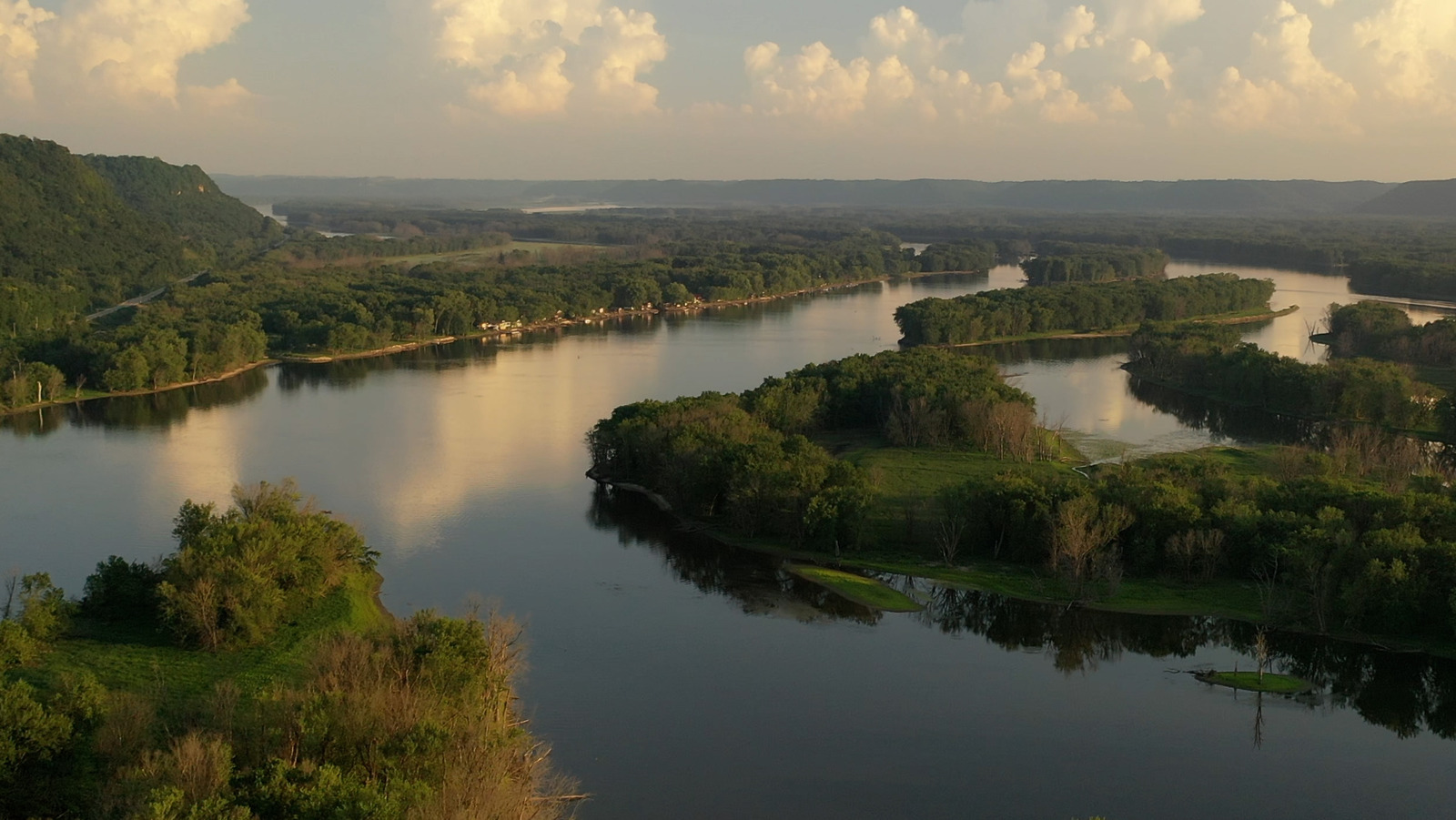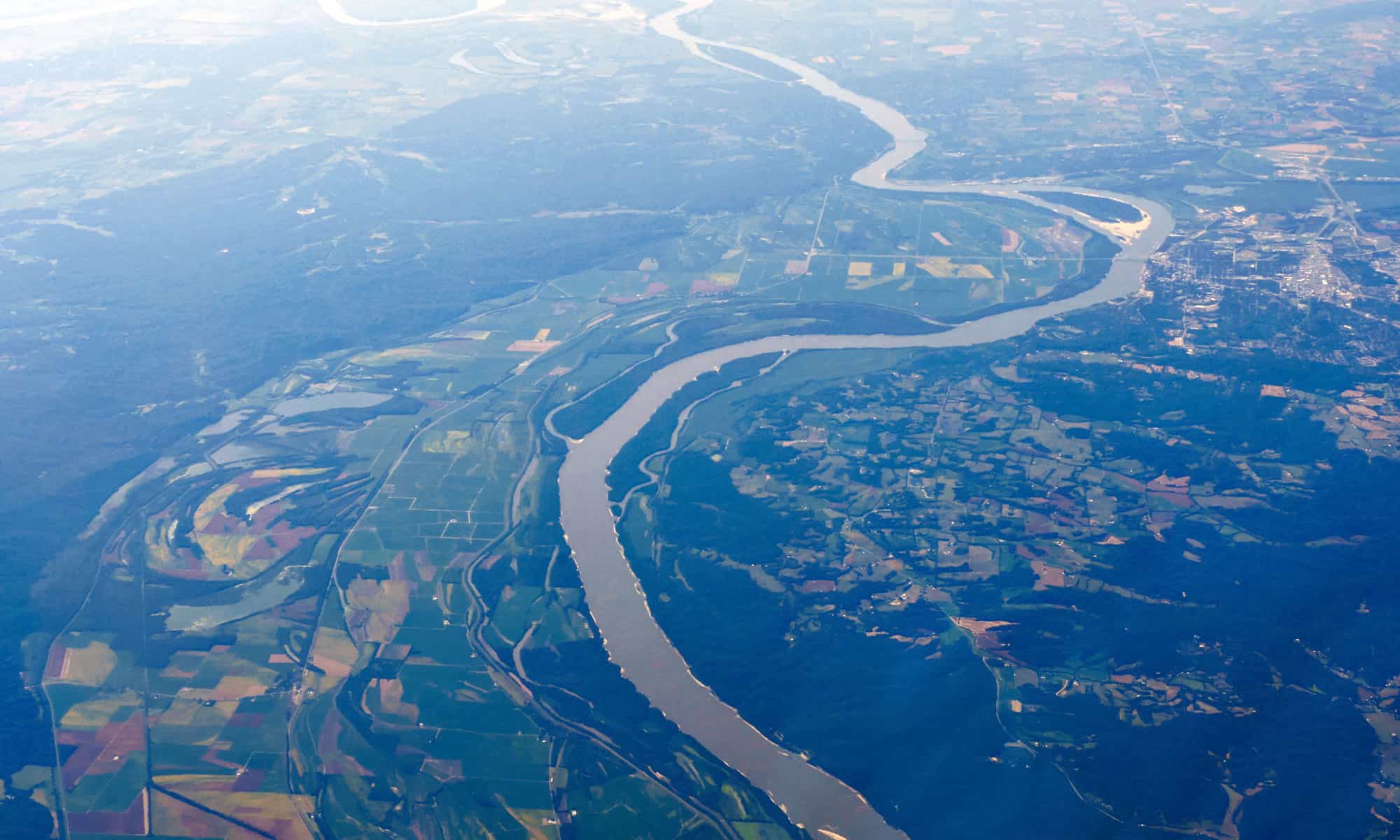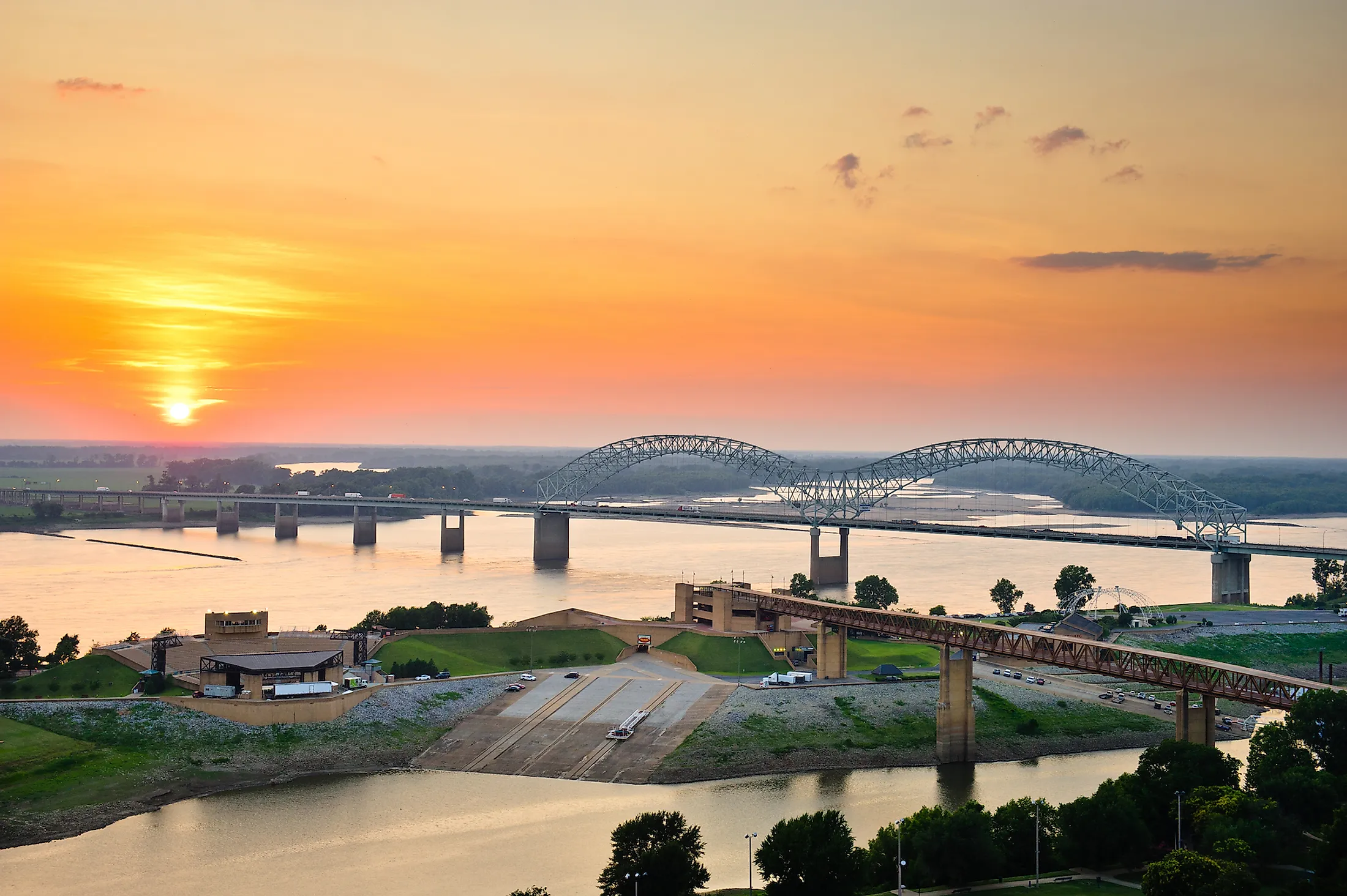Exploring The Mississippi River's Length: Facts & Impact!
Ever wondered how much a single river can define a nation? The Mississippi River's extraordinary length isn't just a geographical fact; it's the very blueprint of the United States, dictating its economic arteries, ecological health, and cultural identity.
The Mississippi River, a titan among North American waterways, embarks on its epic journey from Lake Itasca in Minnesota, weaving a sinuous path of over 2,350 miles before emptying into the Gulf of Mexico. This iconic river has been a linchpin in the American narrative, functioning as a crucial transportation corridor, a provider of sustenance, and an emblem of national unity. It has witnessed the rise and fall of civilizations, the ebb and flow of commerce, and the enduring power of nature.
| Mississippi River: Key Information | |
|---|---|
| Origin: | Lake Itasca, Minnesota |
| Mouth: | Gulf of Mexico |
| Length: | Approximately 2,350 miles (3,780 kilometers) |
| Watershed Area: | Covers 31 U.S. states and 2 Canadian provinces |
| Major Cities Along the River: | St. Louis, Memphis, New Orleans |
| Primary Uses: | Transportation, agriculture, recreation, water supply |
| Ecological Significance: | Supports diverse ecosystems, migratory bird pathway |
| Cultural Significance: | Inspired literature, music, and folklore |
| Challenges: | Pollution, flooding, habitat loss |
| Reference: | National Park Service - Mississippi National River and Recreation Area |
The Mississippi River's length has indelibly shaped the United States. Its expansive watershed, embracing 31 states and two Canadian provinces, underpins diverse ecosystems and thriving agricultural enterprises. The river's navigable channels have fueled trade and transportation, seamlessly connecting the nation's heartland to the global marketplace. Furthermore, the Mississippi has molded cultural and leisure pursuits, affording opportunities for angling, boating, and tourism. Think of the steamboats of old, the blues music echoing from its banks, and the vibrant communities that owe their existence to this flowing giant.
- Unlock Mkvincom Movie What Is Mkv How To Play Guide
- Unveiling Corinna Kopf Fapello The Truth Behind The Trend
Key Aspects of the Mississippi River's Length:
The Mississippi River's Length
The Mississippi River's length, spanning over 2,350 miles, has sculpted the United States in countless ways. Here are five pivotal dimensions to consider:
- Economic Powerhouse: The river's navigable channels have facilitated trade and transportation, propelling economic expansion along its shores.
- Ecological Lifeline: The river sustains vibrant ecosystems and provides refuge for myriad species, enriching the region's biodiversity.
- Cultural Heritage: The Mississippi River has played an outsized role in American history and culture, igniting the creative spirit in literature, music, and folklore.
- Recreational Oasis: The river presents a wealth of recreational prospects, including fishing, boating, and scenic tours.
- Environmental Challenges: The river's length also poses obstacles, such as contamination, inundation, and habitat degradation, mandating vigilant stewardship and conservation initiatives.
These facets are interwoven, underscoring the multifaceted significance of the Mississippi River's length. Its economic impact has spurred the development of cities and industries, while its ecological bounty underpins the region's natural wealth. The river's cultural legacy mirrors the nation's heritage and identity, and its recreational offerings provide leisure and pleasure. However, confronting environmental perils is paramount to guaranteeing the river's well-being and continuity for ensuing generations. The river is a complex system where each part affects the others, demanding a holistic approach to management.
- Decoding Zodabuz7 Sophie Rain Spiderman Why Its Trending
- Discover Court 8610 The Future Of Basketball Is Here
Economic Powerhouse
The Mississippi River's length has been fundamental to its economic prowess. The river's navigable waterways have enabled the movement of commodities and people across vast distances, promoting trade and commerce. This has fostered the establishment of major urban centers and industries along the river's edges, including St. Louis, Memphis, and New Orleans. These cities serve as crucial hubs for transportation, manufacturing, and distribution, channeling goods to and from various parts of the country and the world.
The river's length has also bolstered agricultural development in the Mississippi River Valley. The fertile soils and abundant water resources have transformed the region into one of the world's most productive agricultural zones. The river also serves a critical function in transporting agricultural output to markets, both domestically and internationally, supporting farmers and consumers alike. The river truly operates as a flowing conveyor belt for the nation's agricultural heartland.
The economic contribution of the Mississippi River's length is plain in the advancement and affluence of the communities along its course. The river has been a driving force in the evolution of the United States, and its economic importance endures to this day. From bustling port cities to thriving farming communities, the Mississippi continues to underpin the nation's economy.
Ecological Lifeline
The Mississippi River's length is a primary factor in its ecological significance. The river's vast watershed, encompassing 31 states and two Canadian provinces, hosts a wide spectrum of habitats, from forests and wetlands to prairies and savannas. This mosaic of habitats supports a diverse collection of plant and animal life. The complex interactions within these ecosystems are vital for maintaining the region's ecological balance.
The river's length also fosters a unique microclimate that favors the growth of a variety of plant species. The river's waters regulate the temperature and humidity of the adjacent air, crafting a more suitable environment for plant growth. This, in turn, sustains a diverse population of animals, including birds, fish, and mammals. The river's influence extends far beyond its immediate banks, shaping the surrounding landscape and influencing the distribution of species.
The Mississippi River also functions as an important migratory route for numerous bird species. The river's length provides a seamless corridor for birds to travel between their breeding and wintering grounds. The river's diverse habitats also offer food and refuge for migratory birds, ensuring their survival during long journeys. The river's role as a migratory pathway highlights its importance in maintaining continental biodiversity.
The ecological importance of the Mississippi River's length is unmistakable. The river's extensive watershed, diverse habitats, and unique microclimate support a rich array of plant and animal life. The river also serves as a critical migratory pathway for many bird species. The Mississippi River's length is an essential element of its ecological value, contributing to the region's biodiversity.
Cultural Heritage
The Mississippi River's length has profoundly shaped its cultural significance. The river's vast size and central location have made it a focal point of American history and culture. It has served as a stage for momentous events, a source of inspiration for artists, and a symbol of the nation's spirit.
- Literary Inspiration: The Mississippi River has sparked the imaginations of countless writers, including Mark Twain, William Faulkner, and Eudora Welty. The river's grandeur and enigma have captured the hearts of authors and poets alike. Their works often explore themes of identity, freedom, and the power of nature.
- Musical Heritage: The Mississippi River has played an indispensable role in the evolution of American music. The river's rhythms and melodies have impacted a wide array of musical styles, from blues and jazz to folk and rock and roll. The river's influence can be heard in the soulful strains of blues music, the improvisational energy of jazz, and the storytelling tradition of folk songs.
- Folklore and Legends: The Mississippi River is also a trove of folklore and legends. The river's lengthy history and connection to Native American cultures have spawned a wealth of tales and myths. These stories often reflect the river's power, its unpredictable nature, and its spiritual significance.
- Cultural Exchange: The Mississippi River has also been a significant conduit for cultural exchange. The river has brought together individuals from various cultures and backgrounds, giving rise to a vibrant and diverse cultural landscape. The mingling of different traditions has enriched the region's art, cuisine, and social customs.
The Mississippi River's length has molded its cultural heritage in numerous ways. The river's vast size and central location have transformed it into a focal point of American history and culture, inspiring literature, music, and folklore. The river has also been a crucial conduit for cultural exchange, uniting people from diverse cultures and backgrounds.
Recreational Oasis
The Mississippi River's length has a substantial impact on its recreational appeal. The river's vast expanse and varied ecosystems provide a wealth of opportunities for outdoor recreation. Whether you're an angler seeking the thrill of the catch or a nature enthusiast looking to explore the river's diverse habitats, the Mississippi offers something for everyone.
Fishing is a beloved pastime on the Mississippi River. The river teems with a variety of fish species, including bass, catfish, and walleye. Anglers can cast their lines from the shoreline, from boats, or even from houseboats. The river's abundant fish populations and scenic beauty make it a popular destination for anglers of all skill levels.
Boating is another favorite activity on the Mississippi River. The river's wide channels and gentle currents make it ideal for boating of all kinds. Boat ramps and marinas are strategically located along the river, providing convenient access for boaters. Whether you prefer a leisurely cruise or an adventurous exploration of the river's backwaters, boating on the Mississippi is an unforgettable experience.
Sightseeing is another popular activity on the Mississippi River. The river's rich history and cultural significance make it a compelling destination for tourists. There are numerous historical sites and landmarks along the river, as well as museums and other attractions. From the iconic Gateway Arch in St. Louis to the historic French Quarter in New Orleans, the Mississippi River offers a glimpse into America's past and present.
The Mississippi River's length is a major factor in its recreational value. The river's vast size and diverse ecosystems provide a wide range of opportunities for outdoor recreation. Fishing, boating, and sightseeing are just a few of the many popular activities that visitors can enjoy on the Mississippi River.
Environmental Challenges
The Mississippi River's length amplifies several environmental challenges that demand diligent management and conservation efforts to guarantee the river's health and sustainability. One major concern is pollution. The river's vast watershed gathers contaminants from agricultural runoff, industrial discharges, and urban wastewater, which can degrade water quality and harm aquatic ecosystems. The consequences of pollution can be far-reaching, affecting not only the river's inhabitants but also human health and economic activities.
Moreover, the river's length contributes to flooding, particularly in the lower Mississippi River Valley. The river's slow flow rate and extensive floodplain allow floodwaters to spread over vast areas, causing damage to infrastructure and communities. Flooding can disrupt transportation, damage property, and displace residents, posing significant economic and social costs.
Additionally, the river's length exacerbates habitat loss, as human activities such as agriculture, urbanization, and industrial development encroach on riparian ecosystems and alter natural habitats. The destruction of wetlands, forests, and other natural areas diminishes biodiversity and disrupts ecological processes.
These environmental challenges necessitate a comprehensive approach to management and conservation. Collaborative efforts among government agencies, industries, and local communities are vital to curb pollution, mitigate flooding risks, and protect and restore riparian habitats. Monitoring and research programs are also crucial to evaluate the river's health and inform decision-making for sustainable water resource management.
Frequently Asked Questions about the Mississippi River Length
This section addresses common queries and misconceptions surrounding the length of the Mississippi River.
Question 1: What is the exact length of the Mississippi River?
Answer: The Mississippi River's length is approximately 2,350 miles (3,780 kilometers) from its source at Lake Itasca in Minnesota to its mouth at the Gulf of Mexico. This figure represents the main channel's length, but the precise measurement can vary depending on the methods used.
Question 2: How does the Mississippi River's length compare to other major rivers in the world?
Answer: The Mississippi River is the fourth longest river in the world, after the Nile River, the Amazon River, and the Yangtze River. Its extensive length underscores its significance as a major waterway.
Question 3: How has the length of the Mississippi River impacted the United States?
Answer: The river's length has been a defining factor in shaping the United States. Its vast watershed supports diverse ecosystems and agricultural industries. The river's navigable waters have facilitated trade and transportation, connecting the nation's interior to the global economy. The river has also shaped cultural and recreational activities, providing opportunities for fishing, boating, and tourism.
Question 4: What are some of the environmental challenges associated with the Mississippi River's length?
Answer: The Mississippi River's length exacerbates environmental challenges such as pollution, flooding, and habitat loss. The river's vast watershed collects pollutants from agricultural runoff, industrial discharges, and urban wastewater, which can degrade water quality and harm aquatic ecosystems. The river's length also contributes to flooding, particularly in the lower Mississippi River Valley. Additionally, the river's length exacerbates habitat loss, as human activities encroach on riparian ecosystems.
Question 5: What efforts are being made to address the environmental challenges facing the Mississippi River?
Answer: Numerous efforts are underway to address the environmental challenges facing the Mississippi River. These efforts include initiatives to reduce pollution, mitigate flooding risks, and protect and restore riparian habitats. Government agencies, industries, and local communities are collaborating to implement sustainable practices and promote responsible water resource management.
Summary: Understanding the Mississippi River's length is essential for appreciating its significance as a natural resource, economic driver, and cultural icon. Its vast size and central location have shaped the United States' history, economy, and ecology. Preserving the river's health is critical for ensuring its continued benefits for future generations. The river's length is not just a measurement; it's a testament to its enduring impact on the nation.
- Vegamovies 4k Is It The Future Of Streaming Or Just Hype
- Does Its Always Sunnys Kaitlin Olson Related To Twins Facts Here

Here's How Long It Takes A Drop Of Water To Travel The Length Of The

How Did The Mississippi River Get Its Name? Origin and Meaning AZ

The Mississippi River WorldAtlas